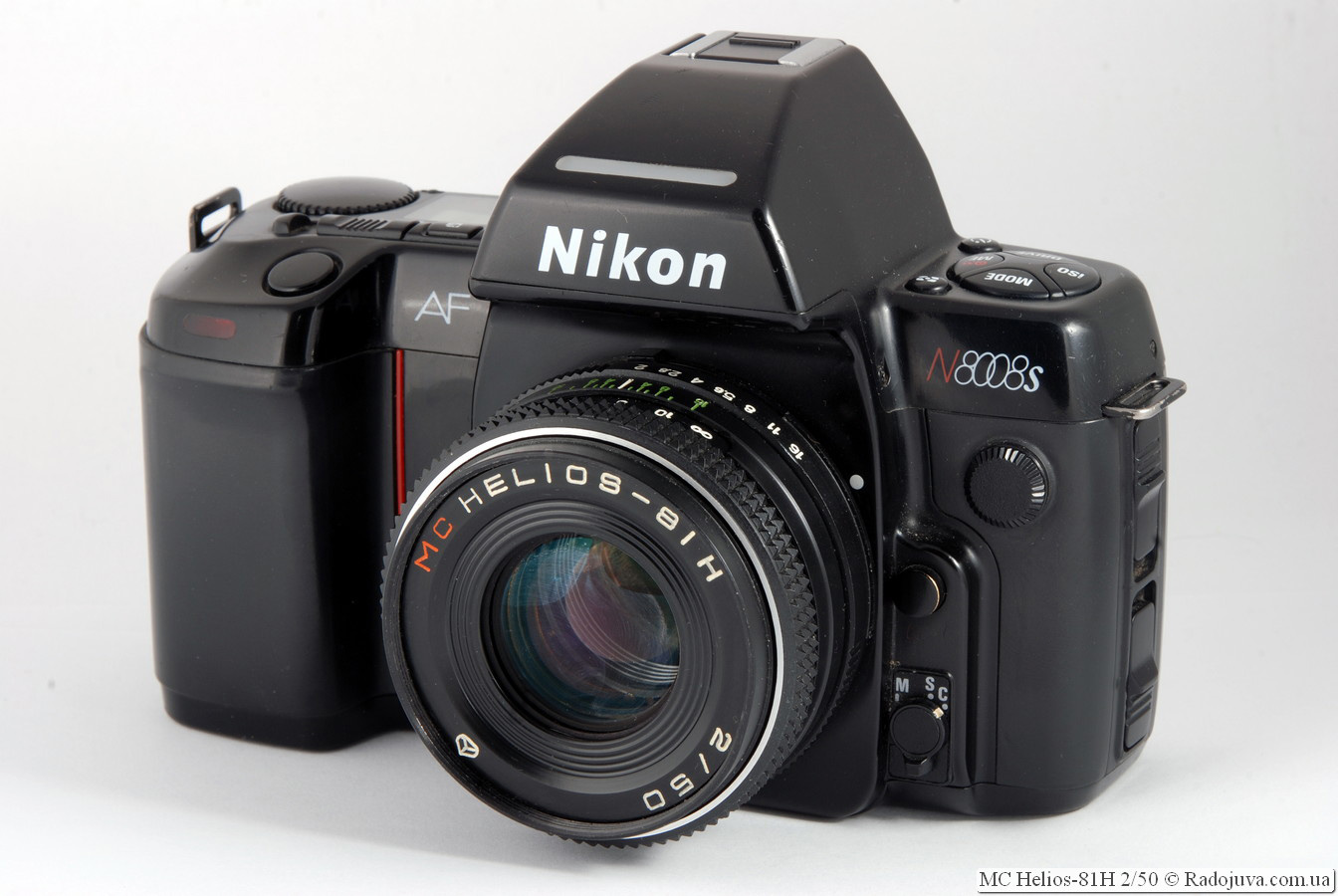
MC Helios-81H 2/50 lens on the camera Nikon AF N8008s. Enlarge Image.
In short
MC Helios-81H 2/50 (or MC Helios-81H 2/50, or Arsat H 50mm 1: 2) - is one of the best standard lenses of Helios family... This lens is most often called a 'fifty-kopeck piece' because of the focal length of 50mm. On full-frame cameras (film and digital cameras with a frame size of 36 x 24 mm) it is standard (in terms of focal lengths and angle of view) and is suitable for everyday use for a wide range of tasks. Helios-81 can also be used as a portrait and creative lens on modern cropped cameras.
In my opinion, Helios-81 earned its popularity due to its compatibility with Nikon digital SLR cameras with Nikon F mount. The bulk of the lenses of the Helios-81 family do not require any adapters and work similarly to the original manual Nikon Nikkor AI / PRE-AI lenses. ...
Also, the popularity of the lens is associated with a special twist of the background, inherent in many lenses of the Helios family, as well as good optical capabilities at a fairly low cost. On average, Helios-81N can be found for $ 30.
Critical: there are many different variants of the lenses of the Helios-81 H / M / AUTOMAT family. If the latest versions are indeed some of the best stock lenses from Helios family, then early versions are the worst... Early versions are easily distinguished by their wide focusing ring and serial number near the front lens. These options have many mechanical problems. Later and better versions have a serial number in small print on the side of the aperture control ring. Here is such a paradox - from the best to the worst is just a step. I strongly advise against messing with these early versions (shown, for example, in the 'Appearance # 3' section). And also by no means do not purchase lenses marked 'AUTOMATIC'... Lenses series Helios-81N AUTOMATIC have a different mount, for which there are no adapters for any cameras (the appearance of lenses HELIOS-81 2/50/53 AUTOMATIC shown here). If something is not very clear, or if you want to be 100% sure that the future purchased lens will please you - ask here in the comments, or contact me according to my personal contacts.
It is difficult to overestimate the creative potential of such fifty dollars. Photo enthusiasts often use it as a portrait lens. Many people just want a fast prime, especially in addition to their stock / kit lens. Aperture F / 2 approx. three steps wider aperture of f / 5.6, which is used in 'dark' kit lenses at the long end. In numerical terms, this means that Helios-81 is approximately 8 times brighterthan, for example, whale Nikon DX VR AF-P Nikkor 18-55mm 1: 3.5-5.6Gwhich use a maximum relative aperture of only 50: 1 over a 5.6 mm focal length. The calculation of the difference in the relative aperture (count the aperture) is performed elementarily: (5.6 * 5.6) / (2 * 2) = 7.84, which is rounded to the value '8'.
History
Helios-81 is a descendant of the Helios-65 (HELIOS 65 AUTOMATIC 2/50), which, in turn, is a shortened descendant of the lenses family Helios-44.
The Helios-81 lens family includes many models and their modifications. In general, the development of the line proceeded as follows: Helios-81 AUTOMAT -> Helios-81 M or N -> MC Helios-81 M or N -> MC Helios-81 N -> Arsat H. Each of the modifications has several subversions.
For practical use, the latest versions of MC Helios-81 H (aka 'MC HELIOS 81 H') and Arsat are best suited for which the serial number is indicated in small print on the lens barrel, and not near the front lens.
Appearance # 1
Lens shown below MS HELIOS-81H 2/50 with serial number 9227112, presumably produced in 1992. The front and rear lenses of the objective have cyan, blue, lilac, violet and red anti-reflective shades.
Appearance # 2
Lens shown below MC HELIOS-81H 2/50 with serial number 9315003, presumably produced in 1993. The front lens of the objective has green, purple and red shades of enlightenment.
Appearance # 3
Lens shown below MS HELIOS-81M 2/53 with serial number 8204223, presumably produced in 1982. Filter diameter 49 mm. The front lens of the objective has blue, lilac, violet, red and yellow anti-reflective shades. The petals of the diaphragm are shiny, yellowish-orange (copper-colored). The focus ring rotates 315 degrees (7/8 of a full turn). Three intermediate clicks between F / 2 and F / 2.8 and two intermediate clicks between the other pairs of f-numbers (rare). Does not sit on without alteration Nikon D70, D70s, D80, D90... Nikon is installed on the rest of the CZK without problems. No protrusion for the diaphragm rheostat, with a long 'skirt' of the diaphragm control ring (but the skirt does not rest against the diaphragm rheostat). Nikon F mount, letter 'M' stands for 'M' blinking aperture.
Appearance # 4
Lens shown below ARSAT H 50mm 1: 2 with serial number 9417121, presumably produced in 1994. The front lens of the objective has green, purple and blue shades of enlightenment.
Appearance # 5
Lens shown below HELIOS-81N 2/53 with serial number 8309805, presumably produced in 1983. Filter diameter 49 mm. The front lens of the objective has bluish and ash shades of enlightenment. The diaphragm blades are shiny, silvery. The focus ring rotates 315 degrees (7/8 of a full turn). Three intermediate clicks between F / 2 and F / 2.8 and two intermediate clicks between the other pairs of f-numbers (rare). Does not sit on without alteration Nikon D70, D70s, D80, D90... Nikon is installed on the rest of the CZK without problems. No protrusion for the diaphragm rheostat, with a long 'skirt' of the diaphragm control ring (but the skirt does not rest against the diaphragm rheostat). Nikon F. mount.
Main technical specifications MC Helios-81H 2/50
| The name of the instance from the review (as it is written on the lens itself) | MC Helios-81H 2/50 with the logo of the Arsenal factory (there are a lot of other ways to write the name of the lens) |
| Basic properties |
|
| Front Filter Diameter | 52 mm (there are options for 49 mm) |
| Focal length | 50 mm (according to some sources - 52 or 53 mm), EGF for cameras with an APS-C type sensor is approximately 75 mm |
| Zoom ratio | 1 x |
| Designed by | for film cameras with a frame size of 36 mm X 24 mm |
| Number of aperture blades | 6 petals. Petals form a hexagon of approximately the correct shape. Petals are dull metal, not blackened. |
| Tags |
|
| Diaphragm | From F / 2 to F / 16.0, it is regulated by the aperture ring, there is no diaphragm operation method switch on the lens. The ring has one intermediate fixed value between the indicated pairs of numbers (between F / 11 and F / 16 there is no intermediate value). |
| MDF (minimum focusing distance) | 0.5 m, maximum magnification ratio is 1: 7 (approximately) |
| The weight | 214 grams measured without caps (lens itself only) |
| Optical design | 6 elements in 4 groups, ('Planar' type scheme) |
| Lens hood | screwed into the front filter, the original lens hood markings were not found. Any analogs are suitable, according to type of such |
| Manufacturer country | USSR, Arsenal plant (later the lens was produced under the 'Arsat' brand in Ukraine). |
| Period | Several years, the exact period of production is unknown. |
Lens modifications
Please note that there are many modifications of the lens and many spellings of its name. The main ones are:
'AUTOMATIC' versions
- Helios-81 2/50 Automatic - you can see an overview of this modification here
- Helios-81 2/53 Automatic - you can see an overview of this modification here
- Helios 81 2/50 Automatic (no dash between 'Helios' and '81')
Versions 'М 2/53'
- Helios-81М 2/53 with H-mount, metal silvery unblacked petals, you can see an overview of this modification here
- Helios-81М 2/53 H-mount, copper colored metal petals not blackened
- MS Helios-81M 2 /53 H-mount, copper-colored, unblacked metal petals (appearance # 3 from this review)
Versions 'H'
- MS Helios-81H 2/50 (with serial number near the front lens, long skirt of the aperture control ring, wide focusing ring)
- MS Helios-81N 2/50 (serial number from the bayonet side, short skirt of the diaphragm control ring, lilac enlightenment, one of the most common and classic options)
- MS Helios-81N 2/50 (serial number from the bayonet side, short skirt of the diaphragm control ring, green enlightenment, one of the most common and classic options)
- MS Helios-81N 2 /53 (appearance # 5 from this review)
- Helios-81Н 2/53 (analogue of Helios-81M 2/53)
- ARSAT H 1: 2 50mm - an almost complete copy of MC Helios-81N 2/50, the differences are described here
- MC Helios-81h 2/50 - full copy of MS Helios-81H 2/50, export version, this version looks like like this.
- MC Helios-81 2/50 - full copy of MC Helios-81N 2/50, export version
Other versions
- Helios-81 2/50
- Helios-81 2/52 (diaphragm ring on the front of the lens)
- Helios-81 (GK-81)
- GOI << HELIOS-81 >> 2 / 52,4 (silver metal case)
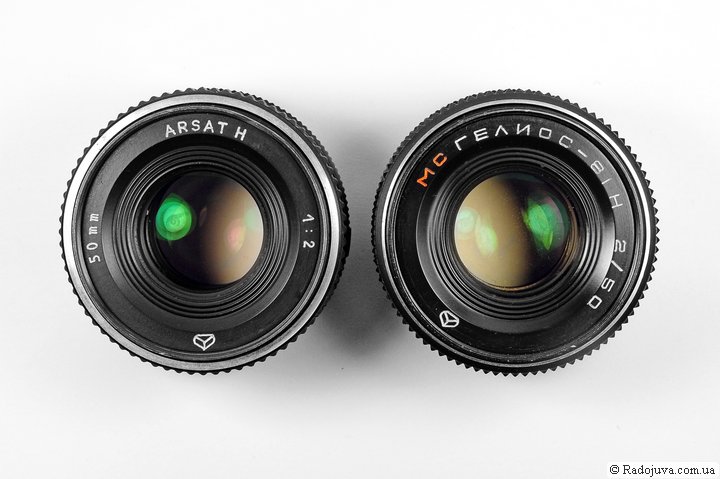
Just different names: ARSAT 1: 2 50mm МС ГЕЛИОС-81Н 2/50
Optically, they are the same lens. The difference between lenses with different names lies in different mounting threads or mounts, body rims, enlightenment and age. Many new lenses MS Helios-81Nreleased in Ukraine (after the collapse of the Union) are called Arsat. This review discusses one of the most popular lenses, namely MS Helios-81H 2/50.
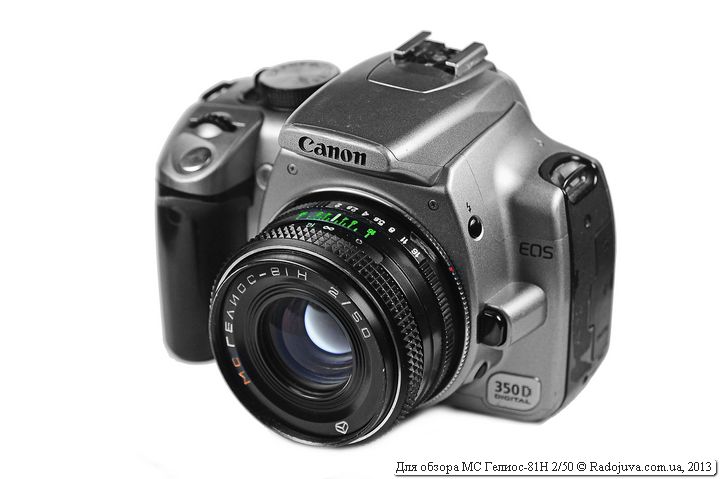
View of the Helios-81N MS lens on a Canon EOS camera 350D Digital The lens is mounted using a cheap adapter Nikon mount F - Canon EOS.
As usual, the first thing you feel and pay attention when using the old lens is its weight, the lens is small, very short, it resembles a pancake. The weight of this “pancake” is quite large. The build quality is usual - a lot of metal and glass. The lens has no backlash.
Interesting: 81-H is read not as 81-'ash ', but as 81-'en'. Easy to remember 81-Nikon, as 'H' mount is Nikon F mount (Nikon F mount)
MS Helios 81-N produced at the Arsenal plants in Kiev or Uman in Ukraine. The lens used special lanthanum glasses - super-heavy crowns with high resolution, this allows you to partially get rid of chromatic aberrations.
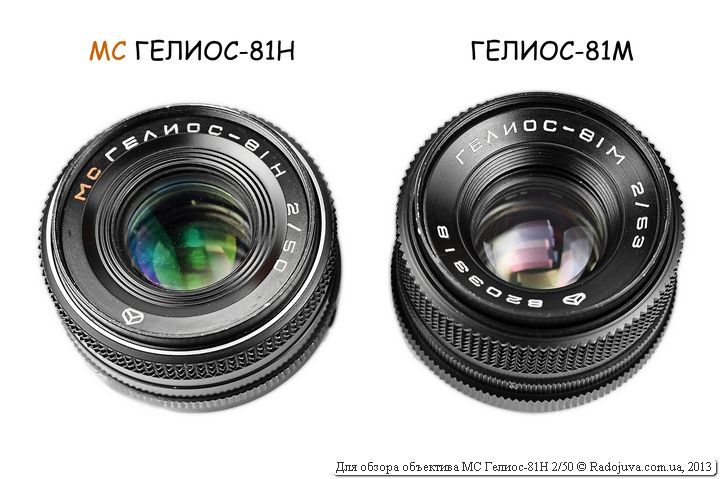
So there are two versions of the Helios 81 lens
How to use with modern cameras
Nikon F-mount DSLRs
To use the Nikon MS Helios-81H 2/50 lens on Nikon DSLR cameras just install the lens without any adapters and shoot for your own pleasure without any tangible limitations. Possibility focusing on infinity, as well as semi-automatic iris control... This is due to the fact that MC Helios-81H 2/50 uses the same bayonet mount (mount type) as the native Nikon lenses. All lenses from cameras Kiev-17, Kiev-17m, Kiev-18, Kiev-19 and Kiev-19m, Kiev-20 use the Nikon F mount, the same as that of modern Nikon DSLRs. Some cameras will even have automatic metering exposure. Exact list of cameras that support metering exposure with manual lenses (such as this one) you can see here or here. For more information on how to use manual lenses, see my article. Soviet optics.
Important: although the lenses MC Helios-81N 2/50 have a protrusion for transmitting the aperture value to the camera through the aperture rheostat (copy AI Nikkor Lenses), while the diaphragm skirt may be too long (like PRE-AI Nikkor Lenses) because some Lenses Helios-81 2/50 without additional modification cannot be installed on modern Nikon DSLR cameras. Some can only be installed on a specific list of cameras. To treat such a disease can be very simple - just cut off part of the diaphragm control ring, as shown in the figure by Sergei Elizarov here.
It's important: if you come across a lens that does not sit on your camera and you don’t want to cut it, you can still easily use the lens on any Nikon DSLR with macro rings... MC Helios-81N 2/50 can be easily installed on any Nikon F cameras via Any extension tube for Nikon F-mount cameras... However, this loses the ability to focus to infinity and medium focusing distances.
Important: to immediately find a variant of MC Helios-81H 2/50, which can work on any Nikon F-mount SLR camera, you need to look for lens options with the name MC Helios-81H 2/50 (or MC HELIOS-81H 2/50) and without a serial numbers near the front lens, as well as any lens variants with the modern name ARSAT.
Important: if something is not clear, or there is a desire to clarify - write in the comments under this review, I and other readers will try to suggest.
Nikon 1 mirrorless cameras
To use the lens on a series of mirrorless cameras Nikon 1 (Nikon 1S1, Nikon 1S2, Nikon 1 V1, Nikon 1 V2, Nikon 1 V3, Nikon 1 J1, Nikon 1 J2, Nikon 1 J3, Nikon 1 J4, Nikon 1 J5, Nikon 1 AW1) use the adapter Nikon F - Nikon 1. The cheapest adapters can be found aliexpress.com. For example, such an adapter can be easily purchased. here.
Important: there are no problems with any versions of Helios-81 for Nikon F mount (Nikon 'N') and any corresponding adapters.
Nikon Z mirrorless cameras
To use the lens on a series of mirrorless cameras Nikon Z use an original Nikon FTZ adapter.
You can use any inexpensive Chinese analogue, for example, such an adapter Nikon AI -> Nikon Z.
Important: there are no problems with any versions of Helios-81 for Nikon F mount (Nikon 'N') and any corresponding adapters.
Canon (EF, M, RF)
In order to install MC Helios-81N 2/50 on any modern digital SLR camera Canon EOS, you will need to use the adapter Nikon mount F - Canon EOS. Possibility focusing on infinity saved. The cheapest adapters can be found aliexpress.com. For example, adapter Nikon mount F - Canon EOS EF (aka Nikon AF-> Canon EF) easy to buy here.
It's important: all lenses of the Helios-81H family (with 'H' / 'Nikon F' mount), regardless of the year of manufacture and the features of the mount, can be installed on any camera without any problems Canon EOS using the specified adapter Nikon mount F - Canon EOS EF (aka Nikon AI-> Canon EF).
To use the lens on mirrorless cameras series Canon EOS M use adapter Nikon F - Canon EOS M (aka Nikon AI-Canon M). The cheapest adapters can be found aliexpress.com. For example, such an adapter can be easily purchased. here.
To use the lens on mirrorless cameras Canon EOS R series, use an adapter Nikon F - Canon EOS R (aka Nikon AI-> Canon RF). The cheapest adapters can be found aliexpress.com. For example, such an adapter can be easily purchased. here.
Sony (A, E)
Using the lens with SLR cameras Sony (DSLRs as well as SLT cameras with a translucent mirror) is difficult. For use, an adapter with a corrective lens should be used, which may negatively affect the image quality. If you still want to use MC Helios-81N 2/50 on cameras Sony / Minolta with A-mount, use the adapter Nikon F - Sony A. The cheapest adapters can be found aliexpress.com. For example, such an adapter can be easily purchased. here.
To use the lens on mirrorless cameras Sony NEX, Sony ILCE, Sony ALPHA with Sony E mount or Sony FEjust use an inexpensive adapter Nikon F - Sony E. The cheapest adapters can be found aliexpress.com. For example, such an adapter can be easily purchased. here... Also available for these cameras autofocus adapter Techart PRO Leica M - Sony E Autofocus Adapterwhich can be found at this link.
FUJIFILM (X, GFX)
X-mount mirrorless cameras require an adapter Nikon F -> Fuji X (aka AI-> X). The cheapest adapters can be found aliexpress.com. For example, such an adapter can be easily purchased. here.
For mirrorless medium format cameras with mount GFX need adapter Nikon F -> Fuji GFX (aka AI-> GFX). The cheapest adapters can be found aliexpress.com. For example, such an adapter can be easily purchased. here.
SIGMA / PANASONIC / LEICA (L, M)
An adapter is required for mirrorless cameras with Leica L mount (T, TL, SL) Nikon F -> Leica L (aka AI-> L). The cheapest adapters can be found aliexpress.com. For example, such an adapter can be easily purchased. here. For cameras with a Leica M mount need adapter Nikon F -> Leica M (aka AI-> M).
PENTAX
Using a lens with Pentax SLR cameras is difficult. For use, an adapter with a correction lens should be used, which can adversely affect image quality. If you still want to use Helios-81H 2/50 MC on Pentax cameras with K mount (and its modifications), then you should use the adapter Nikon F - Pentax K. The cheapest adapters can be found aliexpress.com. For example, such an adapter can be easily purchased. here... The same goes for a mirrorless camera. Pentax K-01.
To use the lens on Pentax mirrorless cameras with Pentax Q mount (Pentax Q, Pentax Q10, Pentax Q7, Pentax Q-s1)just use an inexpensive adapter Nikon F - Pentax Q. The cheapest adapters can be found aliexpress.com. For example, such an adapter can be easily purchased. here.
Samsung (NX)
NX mount mirrorless cameras require an adapter Nikon F -> Samsung NX (aka AI-> NX). The cheapest adapters can be found aliexpress.com. For example, such an adapter can be easily purchased. here. For the camera Nx mini adapters do not exist yet.
OLYMPUS / PANASONIC / KODAK / XIAOMI (mirrorless, MICRO 4/3)
To use the lens on mirrorless cameras OLYMPUS/PANASONIC/KODAK/ XIAOMI (and some others) with a Micro 4/3 mount, it is enough to use an inexpensive adapter Nikon F - MICRO 4/3. The cheapest adapters can be found aliexpress.com. For example, such an adapter can be easily purchased. here.
OLYMPUS / PANASONIC / LEICA (mirrors, 4/3)
For SLR cameras with a 4/3 mount (not to be confused with Micro 4/3!) An adapter is required Nikon F-> 4/3. The cheapest adapters can be found aliexpress.com. For example, such an adapter can be easily purchased. here.
Attention! Lenses of the HELIOS AUTOMAT series
Very important: the lenses Helios-81 2/50 AUTOMATIC и Helios-81 2/53 AUTOMATIC cannot be used with modern cameras. Simply there are no corresponding adapters. Attackers often give out Helios-81 2/50 Automatic (a review of this modification you can see here) и Helios-81 2/53 Automatic (a review of this modification you can see here) for the lens MC Helios-81N 2/50. Be attentive!
Sample photos on Nikon DX (APS-C, crop 1.5X)
Below are my photos for different modifications of the Helios-81 / Arsat H lens:
Jpeg source photos watch and / or download here (200+ photos on Nikon D40).
Sample photos on MC Helios-81H and Nikon FX (full frame, Full Frame)
All photos were taken on a Helios-81N MC and a full-frame camera Nikon D700 FX no processing. Reduced size to 1920 * 1080 pixels and imprinted data from EXIF.
UPDATED
Photographer shared examples of photos on MC Helios-81N 2/50 with readers of Radozhiva Lilia Nemykina:
My experience
I like Helios-81N, with it you can feel the spirit of Soviet lenses, get nice shots and feel like a real manual technician (a photographer who uses manual lenses).
Unfortunately, I must state the fact that in general this fifty kopeck piece loses in many respects to any autofocus similar lens. Helios-81N is very popular, but still, if possible, I recommend using autofocus fifty dollars. Some of them, for example, Nikon 50 / 1.8 AF MKI / II / III (D) (for cameras with a focus motor) or Yongnuo 50 / 1.8 (for any Nikon cameras) are only slightly more expensive than the Helios-81N.
Video review
My video review of the Helios-81 lens family with examples of photos you can see on my Youtube channel, or in the video below:
Results
Latest modifications of Helios 81H - some of the best standard Soviet high-aperture lenses... First of all, Helios 81H is interesting for its twisted bokeh, compact size and low cost. Among the shortcomings, one should single out the difficulty in searching for the “latest” MS modifications and an unblacked diaphragm.
Comments on this post do not require registration. Anyone can leave a comment. Many different photographic equipment can be found on AliExpress.
Material prepared Arkady Shapoval. Training/Consultations | Youtube | Facebook | Instagram | Twitter | Telegram

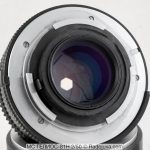
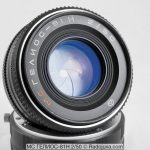
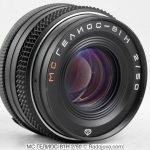
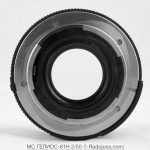
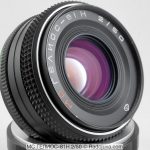
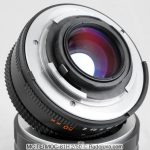
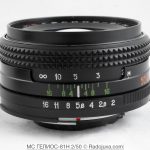
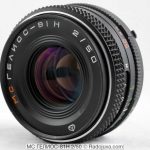
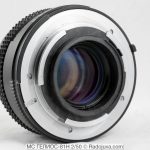
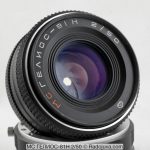
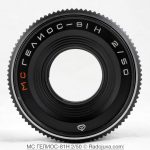
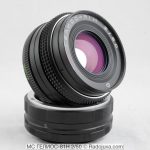
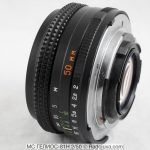
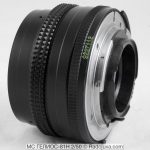
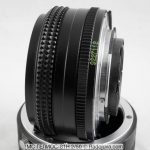
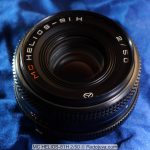
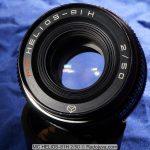
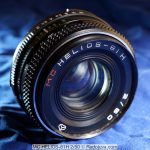
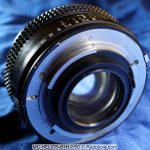
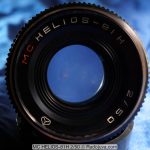
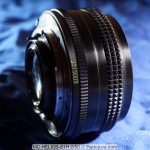
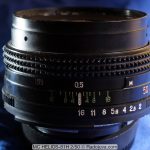
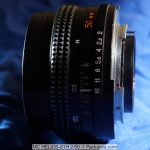
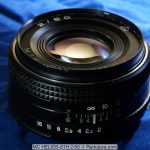
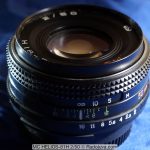
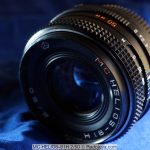
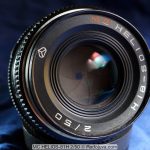
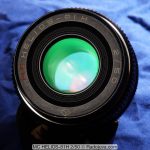
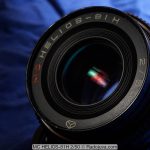
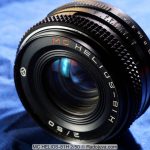
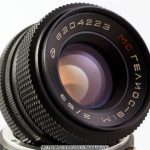
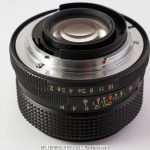
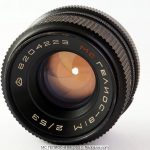
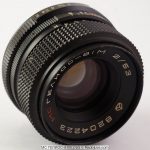
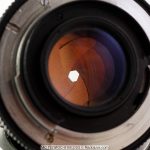
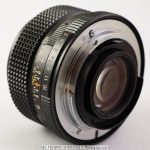
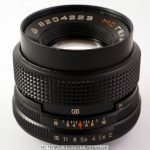
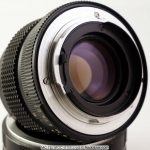
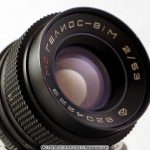
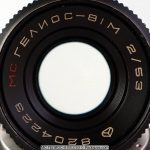
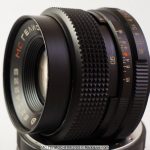
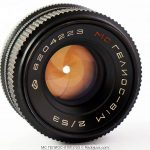
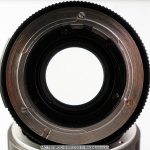
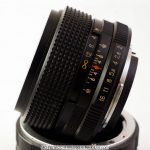
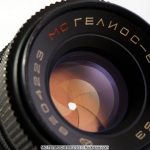
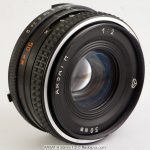
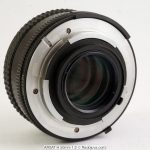
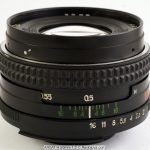
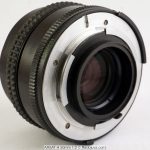
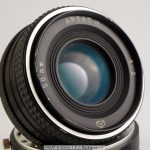
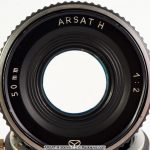
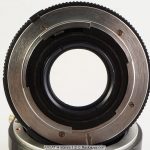
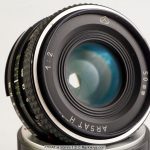
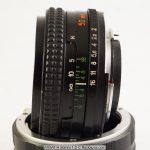
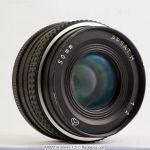
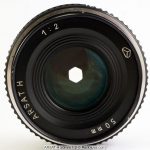
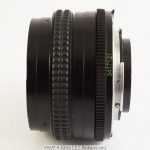
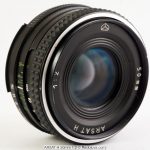
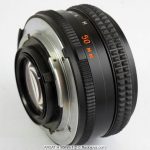
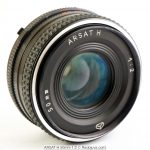
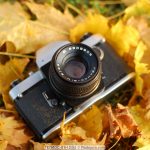
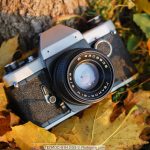
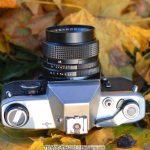
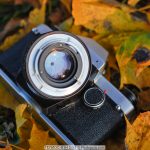
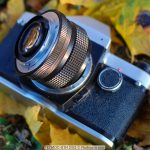
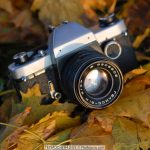
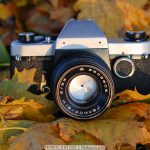
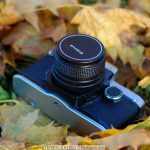
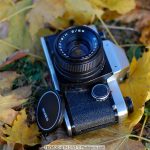
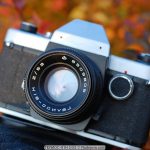
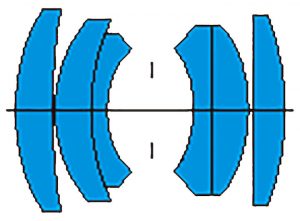
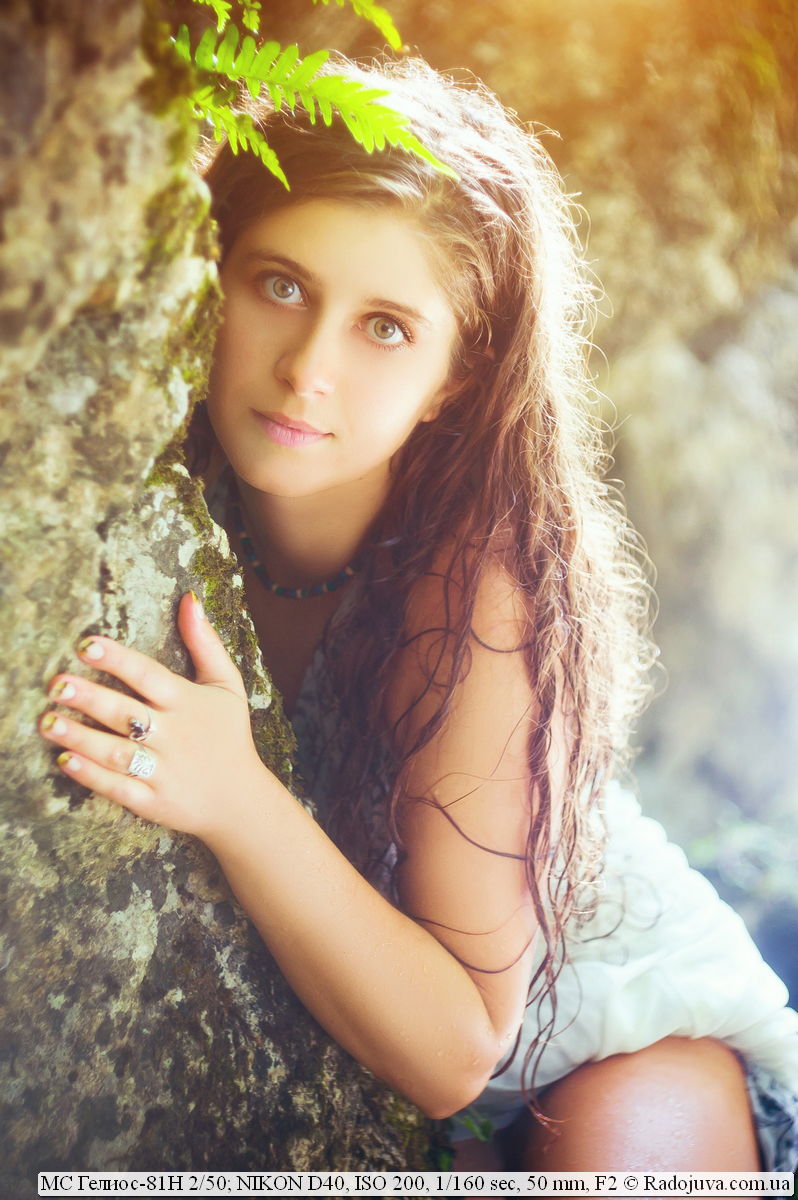
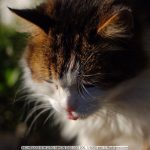
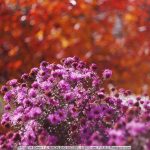

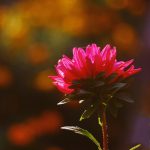



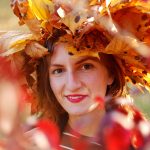
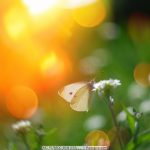
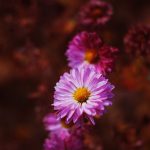
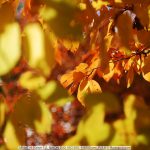
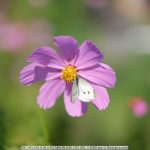
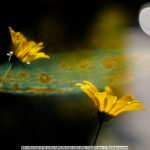
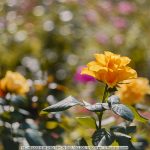

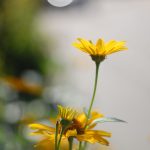


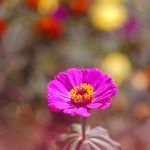
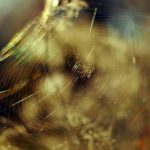
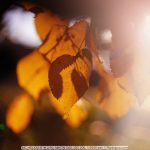
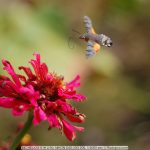
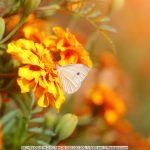

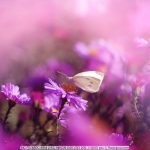
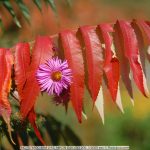
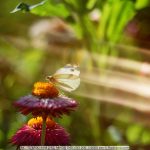
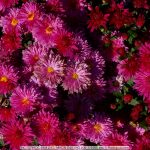

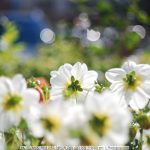
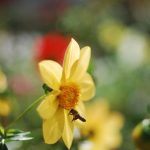


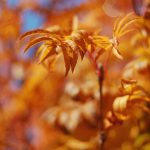

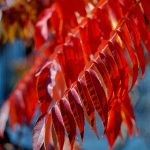

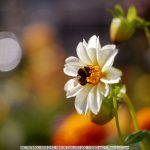

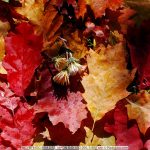
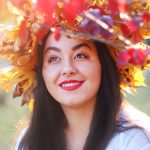

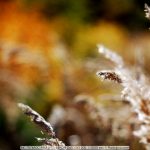




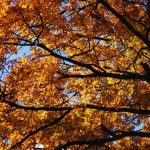

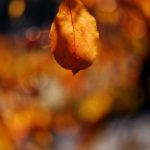
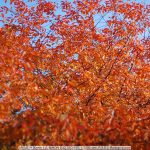
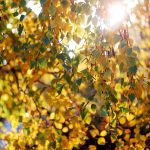
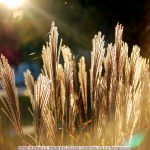
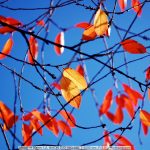
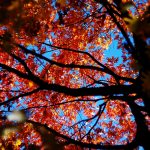
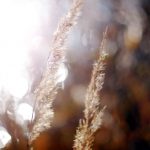
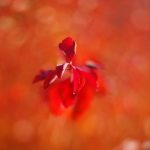


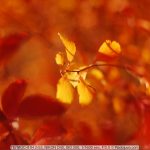
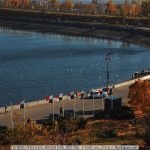


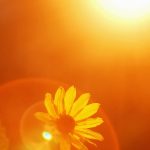

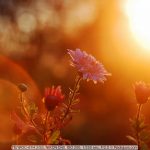

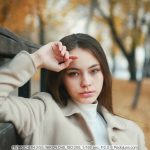

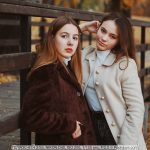

















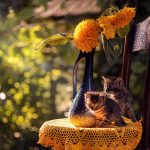



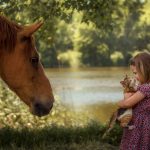


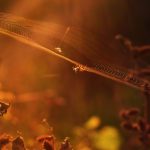
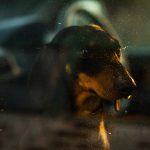





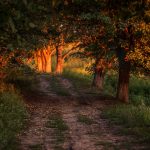




Hobby colleagues! Maybe someone has an electronic version of 4-hour video tutorials or a tutorial for the photographer, etc. If someone shares, thank you in advance! My email post office tuzoo@bk.ru
Hello.
Tell me how to use this lens on a fujifilm xt 10 camera.
Ai-Fx / Nikon-FX / Nikon-Fujifilm adapter. The simplest one will do, for example: link
Just note that through the adapter Nikon F - Fujifilm
https://lexfoto.com.ua/nikon-f-fujifilm-x-mount.html
You won’t be able to set the aperture with lenses that went under the number.
Please tell me why all the photos on my Helios 81H
have a blue tint. file: /// C: /Users/%D0%9E%D0%BB%D1%8F/Downloads/DSC_0429.NEF
Put the files somewhere in the cloud (in the mailers yandex, mail, gmail, etc.).
Here is all blue (on a sunny day): https://cloud.mail.ru/public/MYdx/w54tugbmF
Mysterious and mysterious white balance.
How to beginner to return natural paints?
Olga, what are your White Balance settings in the camera?
On the machine?
In parallel with the Gelos-81N, I’m shooting on a whale 18-105, with which the color rendering of the pictures is normal. D5100 camera.
Do I understand correctly that you are using a lens with a chip attached?

And so in the whole picture:
1. Wrong colors due to the fact that the white balance setting is set for incandescent lamps (for a warm color, when it needs to be compensated for in colder shades). Check the white balance setting (put in a car or other suitable one).
2. For such a picture, cover the aperture to at least 5,6 (8 or even 11 can be), improve sharpness, decrease shutter speed and overexposure.
3. You have a raw file. Open it in the free program for Nikon capture nx-d and adjust the white balance, work with lights, add sharpness.
Just a few clicks:
Sorry for text errors: for warm light, not color; the shutter speed is now at least 1/4000 and there are overexposures in some areas - when the aperture is closed, the shutter speed will increase (it will decrease by mistake).
I will also add that in my subjective opinion, if this is Helios 81H, then it is not a very good instance (or it was chosen incorrectly). The edges are very weak, given that the frame is made on a cropped camera. Things were a little better with my G81.
Great lens!
Valentine prompted me correctly, but I’ll add
1) Do not trust the chip - because of the nonlinearity of the aperture closing, the pictures are overexposed on the covered ones. Check on the histogram and make exposure compensation.
2) Screw on the hood - the enlightenment is still weak. And given that the sun is directly in front of you, exposure could lead to a decrease in contrast. Since it is high, the hand will help.
I wanted to attach a picture after a couple of clicks, it doesn’t work. Text with a link or thumbnail with imgbb is blocked.
Yes, you are right, Chip Lushnikov is glued to the lens. Indeed, the BB was installed “for incandescent lamps”. When set to “AUTO” mode, blue colors are gone. Now in the evening, with the chandelier on, the pictures are slightly yellow. Tomorrow I'll try to check it out in daylight.
Valery, thank you for your help! And why did the 18-105 lens initially display natural colors in the pictures, if the BB was “for incandescent lamps”? After all, the shooting was carried out with the Kit lens and the Helios-81N in turn.
Lay out the same nef file from 18-105 and there will be an answer. Guessing without analyzing the file is of little use. According to BB, if you shoot directly in jpg: for bright daylight and sun, autobalance is quite accurate, shoot in auto; for incandescent lamps - it is better to choose a setting, for fluorescent lamps - too, for cloudy weather and shooting in the shade - a setting is desirable, on many cameras the car gives a slightly cold tone. For all conditions, you can use auto WB, if you shoot in raw and then edit (while at the initial stages, a gray card can help in checking the WB).
Victor, here is a shot from the 18-105 lens with the BB “for incandescent lamps” https://cloud.mail.ru/public/428W/3WT89ZByS
Why do you write “for incandescent lamps”? Photo information indicates that white balance is set to Auto.
And this is already with Helios-81N with BB "AUTO" https://cloud.mail.ru/public/DXDX/NiqGRrkdN I want to clarify, my copy of Helios-81N is really not very good, or not at all?
And in the picture from 18-105 and in this new picture with the G81, the white balance is set to Auto mode. The pictures were taken at different times, in different conditions, so the camera set a slightly different temperature for them. In this image from the G81 there is no such hard distortion of the white balance. Moreover, not a single ready-made preset in the camera that can be selected manually would give a more accurate result. In these conditions, the use of auto balance is justified. Further improvement of the frame to your taste is easiest to do in the program.
According to the lens - in my subjective opinion, it is faulty. I have not seen a strong sagging of the left edge, less strong on the right, in a normal specimen. It's hard for me to imagine what the picture will be if I put it in full frame. I do not presume to judge the reasons for this work. Maybe it was originally like this, maybe it was cleaned and collected incorrectly, I don't know, but the picture is not at all happy.
Hello. You wrote in your review about the diameter of the front filter 52mm, I also have such a model, but here the diameter is 49mm. What is the matter here?
In different years of production. I also have 49. I bought a 49-52 adapter ring on Ali to be able to use standard filters.
Hello! I have such a question: in addition to the lens presented in this review, I keep with me two old fifty dollars, the Zenith 1.7 and a small industrial. I do not know much about filters and bother a bit with the question of whether they are useful to me in my work for shooting outdoors with a Canon 7D camera. I will be glad to hear good and reasonable advice.
Why light filters? if for shooting landscapes, sea, mountains - then polarizing is useful. In other cases, perhaps as a protective one; BUT a good filter will cost more than these lenses, and a bad one is unnecessary ...
But the hood is highly recommended for both; in china aliexpress you can order good metal hoods for the right size.
Good afternoon. There is an opportunity to buy a new Kiev-19 with the MS Helios-81H 2/50 lens. Kit '89. There is no way to check with your camera. Can you please tell me that there may be a "pig in a poke", that is, do not sit the lens on my camera (Nikon D3300) and again the quality of photography with the lens. On the one hand, good, new. But on the other hand, it turns out not "round". Thanks.
You need to look at the location of the lens condition. The fact that it is “new” may not be so good - it was lying for a long time without use in unknown conditions, it could jam the diaphragm, and the fungus could germinate ... But it should sit down, only there will be no automatic exposure metering, everything will have to be manually adjusted.
here the problem is that there is no way in place: ((the store is selling.
Don't buy, you will only suffer with the D3300. Stores generally do not sell cheaply, but also with a camera, for sure the price tag is high. Want a working fifty dollars for a portrait and inexpensively - on Ali yongnuo 50mm F1.8 version for Nikon. It costs 4 thousand rubles with delivery anywhere. Once I had the opportunity to work with both of them on the D3300, I'm definitely for yongnuo: autofocus, auto exposure metering, sharper on open, normal enlightenment. Of the minuses - sometimes the camera lost the lens and gave an error, but it was only once every five hundred frames, so detaching-attaching was not a problem.
Valentine, but can I explain in more detail why do I suffer? Now there is Helios 44M, honestly straight in love with him! I use whale less often. But there isn’t enough infinity on Helios: (((I use an adapter without a lens (I didn’t want to). Helios 81, I understood it would be infinity and the picture quality is good. If possible I would buy Nikon 35mm, I’m dreaming. The price bites, even b. y: (((Yongnuo once examined the lens, but dissuaded :( They told Nikon to buy 50mm better.
My preferences for the D3300: Nikon 50mm 1.8G (if there is more money) or Youngnuo 50mm 1.8 (if there is less money). These are really working and convenient options for Nikon, allowing you to focus on photographing. Say what you like, but even with good skills, setting the desired exposure and precise focus takes time. A large number of shots of some amateurs filming on Helios and claiming that they had absolutely no problems with either focus or exposure, turned out to be worthless in fact (there was simply no exact focus or proper exposure). Also, do not overestimate the characteristics of the Helios 81H (this is a good lens, but he loses the same to Youngnuo in the picture). In general, a fifty dollars can be taken by Youngnuo (a little more than 4 thousand), and 35 second-hand from Nikon (6-7 thousand).
Thanks Valentine for the answers. I’ll think again about Helios (a set of 6000 seemed a little expensive to me of course, but everything is new). Unfortunately, 35 from Nikon from 9t.r for 7 I probably would have already bought with pleasure, but I can not find. Honestly and by mail I will not venture, you never know what they slipped. 50 1,8D from Nikon is new from 8t.r, but I still want 35. Nevertheless, it would be more convenient for me with him. And landscapes and people (the truth is not suitable for a portrait, but still;))
I also forgot to write what I don’t really want Yongnuo. Shooting people with him is not very good, the skin goes green a lot. The lens is green, not blue: (((((In Photoshop for a long time because of this I do not want to sit :(
Elena, where did you see any systematic greening of people's skin caused by the Yongnuo 50mm lens? Check out the review and photos on this blog - 99% of the problems are ok. That is, you are not worried about that, and Helios can cause more problems than this. The real risk with Yongnuo is essentially the same - it is likely that a bad concrete specimen may come across, but here you need to open a dispute and seek a replacement product / refund (in short, the usual risks of the buyer).
About Nikon 35 - take your time, monitor, there is an available option. Although 35mm is a convenient focal length, I like fifty dollars more for crop.
6000 for Helios-81N? then no of course. If for 1-1,5k - then you can take it.
Helios-81n cannot cost 1500 rubles
3500r him the price, if ideally
but because Elena is not going to adjust the colors in Photoshop, then this lens is not for her :)
native fifty dollars will be both more expensive and better
I have never seen it for such a price tag. I myself took it for 4k - in perfect condition, but with a dandelion glued on. The latter is more likely to interfere.
I bought for 1500, there were a couple of pieces, one sold for the same 1500.
It all depends on the greed of the seller (especially the huckster with avito, etc.)
Thanks again for the answers. Nevertheless, I decided not to rush yet. I will look after 35, nevertheless I would like to take pictures with him. Fifty in my future. Honestly, the two of them could not choose. At first, fifty kopecks wanted, but I was not afraid to turn around in the apartment. True, there is enough space on Helios :) On my whale I looked more I shoot in the intervals of 24-45. And for the landscape, as I understand it, 35 will be more convenient.
Yes, do not rush, gain some experience. Helios for 6 thousand is definitely not necessary. For 35-ke, consider one thing: it is convenient for aperture ratio, convenient in some cases for a focal length, it gives a picture better than whales, but, in general, this is such a budget average. Fifty Nikonovsky, of course, is felt differently, and here the whale lens does not replace it in any way (the difference is very large).
Thanks. Valentin, do you understand how I use fifty dollars? And for comparison, you do not have random photos taken by you 35mm and 50mm, it would be nice to look again without processing. Again I am at a loss :( We must once again shovel the Internet;) Just like that, they all talk differently. Someone 35 advises more, someone 50. Honestly straight upset again. I just really like to take pictures of nature and started to get a little involved in portrait photography. I understand that both this and the other are necessary (50 is still for a portrait, but 35 is in no way) but if you are a station wagon, then a zoom with a good aperture, but this price is sky-high, not for an amateur: ((
You yourself have to decide which focal point you need. Alien shots will not help much, the more there is no particular point in pair photography, since maintaining the scale of the subject of shooting, we get almost the same pictures, differing in nuances and not helping to understand what to choose in the end. Do not overload your head with articles, comparisons and choices - shoot for a while at the zoom, noting which focal lengths you choose for which scenes. After some time, understanding will come by itself. Perhaps, for nature, at focal lengths 18-35, you just leave your whale, and for a portrait you will take 50mm. Or, settle for 35mm aperture as a mid-range solution suitable for many scenes and shooting conditions. Perhaps you will not take anything at all if you get the hang of working in nature with a whale and in a portrait with Helios 44 and this will be enough for you.
Thanks. I will leave the kit anyway, I like to photograph it. In many moments it helps out. Please tell me your opinion (as I understand you tried both) the aperture ratio turns out to be 35 stronger than 50, did I understand correctly? Yes, you are right now I'm “playing around” with Helios I like him. I like its sharpness, aperture. But constantly focusing with your hands, especially when taking pictures of children, is torment :( You don't have time to tune in to one thing, as you focus again to shoot another, missing the previous interesting frame: (((They are good at shooting the subject and macro (but I always thought it was possible to shoot closer. But Unfortunately, it loses sharpness close up.) And again, I want to shoot more space (but it does not allow) there is no infinity: ((((
Nikon 35mm F1.8G and Nikon 50mm F1.8G have the same aperture. The Yongnuo 50mm F1.8 is slightly lighter than the Yongnuo 35mm F2, which doesn't really matter. Used all 4 models. My subjective opinion: if you have a cropped camera and a whale lens, which you will continue to use, it is preferable to have a fast autofocus lens of 50mm or more. Inexpensive and good enough for the hobbyist, this is the Yongnuo 50mm F1.8. If 35mm is needed for some personal reasons, then I would look at the Nikon 35mm F1.8G in a used version. I do not recommend rushing into a choice and getting carried away with reading comparison articles.
Elena, Sigma 17-50 / 2.8 EX DC buy and you will be happy.
There are enough such lenses in used.
35 and 50mm (especially) on the crop, these are very different focal lengths.
EFR 52,5-53mm and 75mm. A fifty-kopeck piece on a crop is a portrait portrait on ff.
Yes, Dmitry know about focal points;) Here I am about that, because I can not decide at all. As they say, I want to eat a candy ... As for Sigma, there is no possibility yet, I definitely don’t want to;) Sigma, as you know, is a “pig in a poke”;) How lucky :(
I had 6 Sigma lenses. I recently sold one, out of these 6 only one I bought new - 35 / 1.4 ART. No need to be afraid of buying a used one.
Helios You also used second-hand.
Sigma makes strong enough lenses. And if everything works correctly on the verification, then it is likely to continue to work later. Choose a seller by lot on Avito or another flea market with adequate photos and a description of the product. Look at the photos in what external condition the lens is. A good seller usually photographs the lens from all sides and photographs the lens on an open aperture. Look at the check so that everything is correctly and correctly focused. If the selected lens is motor, then listen to how the motor works when focusing.
Helios did not buy, friends gave Zenith to "indulge". At home there is still Fed with Industar61 until I got to try for macro. But nothing will reach him :))) Thanks for the advice :)
.... I apologize - but some amendment-addition to the use of Arsat (Helios-81) on Sony A -
with some diligence and accuracy, the lens fits into the A mount without a lens, but using the Chinese adapter "Minolta A-M42" - you will need to mark, finish and fix the lens in the adapter. With this finishing, the dimensions of the native Nikon bayonet will go away a little - 0.5 mm of outer diameter is removed on each "blade", but the opportunity to return the lens back will remain. Naturally - the lever of the "jump" of the diaphragm is removed during installation in the sleepyhead.
Tested on sony a57 - while infinity remained with a scanty overrun, the distance scale did not begin to be adjusted - I was focusing on sharpness.
Overall, I liked the lens! I will not describe - because I am an amateur and I don’t really know the exact terminology in the description of “bokeh” and other things.
Hello! I use Arsat 2/50 for video. It's all class, only the main drawback is the eerie, pronounced blue halos (circles) around the light sources. For example: headlights of cars in the evening, incandescent lamps. Looks terrible. Question. Does this affect all Helios 81H and their twins Arsat, or is it just me that was so lucky?
I also observed halos, only yellow-orange on 2 arsates (94 and 96 years) and helios 89 and 91 years. Moreover, the intensity of halos and other glare depends on a specific instance. The worst thing was for the Arsats. Everything rests on the quality of enlightenment of the lenses of specific specimens.
Hello! Please tell me, are there any here who tried to put this lens on Fujifilm xt? There is an adapter from profoto with a title shift. How convenient is it to work with this lens and such an adapter, and can there still be examples of photos?
Hello, a friend wants to give me a Helios-81H 2/50 MC but I don’t know if he will get on my D 850? I just want to understand whether he should bother with delivery or not (we live in different countries and meet in Europe).
Will rise
On the D800, a mirror somehow caught on ...
thank you
I have MC Helios 81 H 50 \ 2. I bet on the D7000 without any problems. Shows a green focusing point, apparently, the metering does not work badly (it seems to me), but ... There is no exif, I do not see any shooting parameters. I don’t even know what aperture I shoot at, although sometimes it would be harmless to see both the shutter speed and ISO ... In addition, I don’t understand how to analyze the photographs in order to select those parameters for different topics that give the result I like the most. Shooting in A.
Now I have a D7200. I haven't put the lens on yet. I think the problem will be similar ...
Help me please! What am I doing wrong?
Hello. I have a problem, the back lens is worn, no scratches are visible, but the enlightenment is cloudy in the center, the diameter is 6-10 mm, someone rubbed something rude, how can I restore or wipe it, can it polish?
You do not.
If the quality of the photos is not greatly affected, leave it as it is. If it is strong, find another instance.
Thanks! Thanks to this site, and specifically to this article, he chose the Helios-81N lens. For training in working with a DSLR, I personally need what I need: I can twist the aperture and work with focusing. In combination with the old Canon 450D, due to the lack of power consumption by the lens, a single Akum charge lasts about 1 thousand shots. But the lens itself involves thoughtfully taking photos, rather than riveting a series of shots. You need to get used to focusing; through the viewfinder, the process is more complicated than through the LiveView. A few examples of amateur photography on the MC Helios-81N 88 onwards



About 10 bucks is, unfortunately, not very true. Except for a machine gun and in poor condition. It is Nikon's version without chips of 50 bucks for a long time.
The review in 2011 was done
good day. please tell me what could be the problem that the nikonD3100 camera stopped feeling the Helios 81N lens. I am a fan and photos are only for the home archive, I’ve photographed with this lens for six years and in one day they just stopped feeling each other
Maybe I forgot to put it in M mode.
This usually happens when love ends ... 5 years, what did you want, feelings faded ... Well, how else to answer this?
Good evening ! There is a Helios 81 n, there is a NIcon F 301 camera, it turns out that if you twist this lens, then one pin falls into the groove of the screw and you can’t remove it, but if you pull out this pin? )) Then there will be no automatic metering?
Of course, I did not see the F301 in my eyes, but this pin is not a screwdriver by accident? Maybe it is better to cover the screw?
No, most likely this is the P and Phi mode, well, in principle, it should not be put on for long, I thought and would cover it with cold welding, I think if the current will be reliable, I don’t want to disassemble it later. thanks)
http://album.foto.ru/photo/2999293/
A week ago I bought myself such a lens for Canon EOS 10D. Year of release - 1988. Immediately I could not get used to focusing on an open aperture. At f / 4, for example, there are no problems with focusing at all, but at f / 2-2.8 at 80% on the first or second day for some reason I caught focus at 5-6 millimeters from behind, although it seemed to me that I was hitting exactly. It turned out to be such a back-focus, albeit on a manual lens)). Now it is more or less normal, my hand has a little "stuffed". By the way, together with the lens, they gave away the camera "Kiev-19" in almost perfect condition. It is, of course, much easier to focus on it, tk. there the focusing screen has Doden wedges. But at Canon, it's a matter of time and practice. I also compared the picture in terms of sharpness with Canon EF 35-80 III (they gave it to the load to the carcass) - Helios is already 2.8 sharper than Canon by 5.6 (at f / 4, the Boot has a lot of soap mixed with HA). So f / 2 for the 81st is quite working, which cannot be said about the same Helios 44, 44-2, etc. By the way, if anyone decides to attach it to Canon, then take the adapter either with a programmable chip, or without it at all. I have it at f2.8-f / 2 misses in most cases, and if you use f / 4 or less, then manually getting into focus without confirmation will not be any problem.